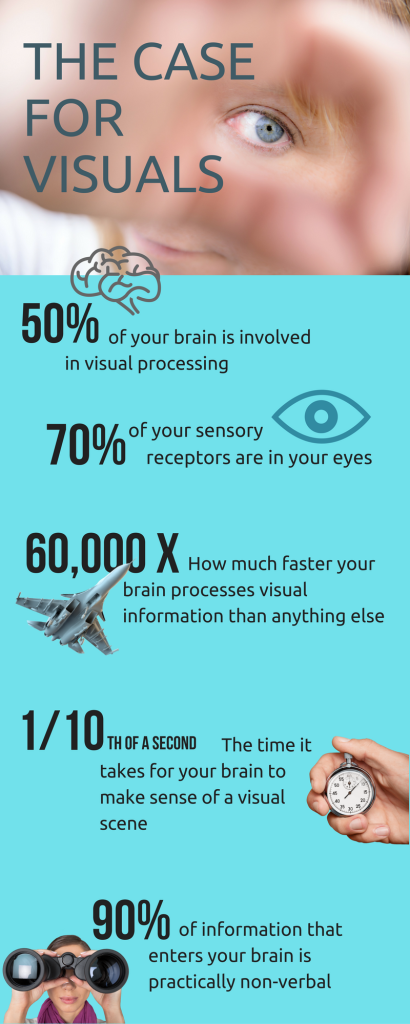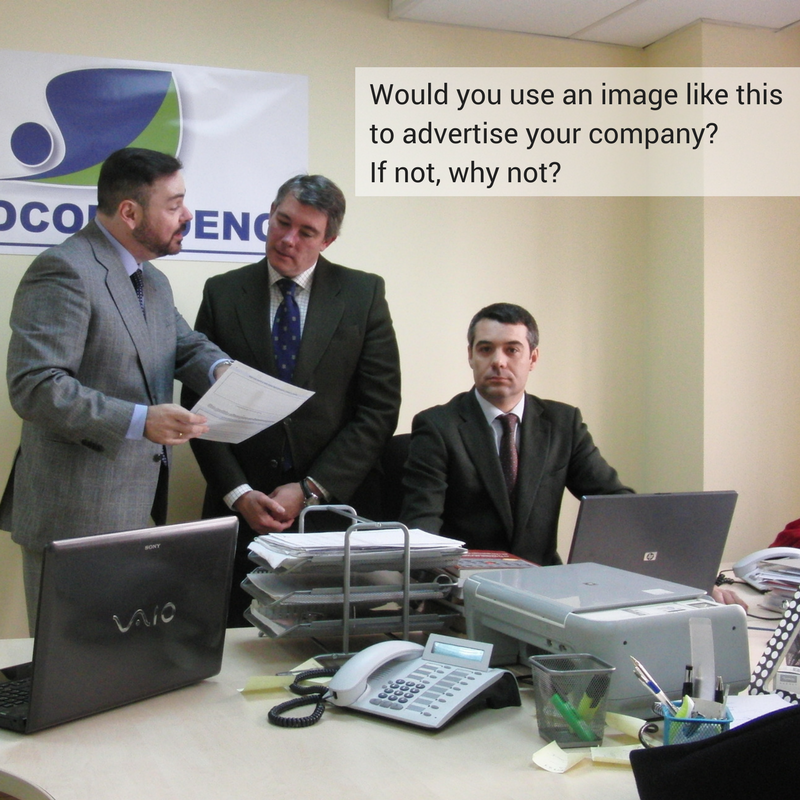
Written by Susi Doherty, a guest blog written for Breathe HR Partner Hub
Updated: February 2020
Content marketing has been a term buzzing around for a few years now, so let’s start with a definition of that. According to the Content Marketing Institute:
Content marketing is a marketing technique of creating and distributing valuable, relevant and consistent content to attract and acquire a clearly defined audience – with the objective of driving profitable customer action.
Visual content is a type of content marketing and takes the form of anything from photographs to infographics to video to gifs to graphics (all of which are ‘visual assets’).
So, the term ‘visual content marketing’ is broad and includes online and offline visual assets such as those that are used for:
From a scientific perspective, there are endless facts that illustrate why we respond to visuals as human beings. For example, did you know that when we hear a piece of information, after 3 days, we tend to remember about 10% of it. If we saw visuals about that information too, we remember more like 65% of it.
This infographic demonstrates some of the reasons that visual content is so massively important:

You need visual content for so many things and ideally for every single piece of content that you put out. It’s really tempting to just start throwing out any visuals you can get hold of – free stock, what’s on your iphone, repurposed content… However, the need for such quantity should not detract from the necessity for some creative, insightful effort into creating and using them. It demands both uniqueness and strategy. This is where many marketing and communication teams stumble, especially as the clammer for visuals can seem overwhelming. Keep these as your basic cornerstones when producing visual content:
From a very basic perspective, your appearance is how people that don’t know you perceive you to be. So at the very least, we should take pride in how we appear to the outside world.
Deeper than this though is the need to have a unique identity – visuals have to be true to your brand and to its audience. Everything from your brand to your story, to your USP – it all needs to be incorporated into the images you are using to market your business.
Just throwing out cat gifs or badly taken photos of your team at an event, or using stock images throughout your website, is not going to cut it. In fact, as with any marketing done badly – it is more likely to be detrimental.

Avoid amateurish design. If you’re not confident of your design abilities, find someone who can help. Terrible graphic design is a sign to your customers that you are not willing to invest in creating a positive first impression — what other corners are you cutting?
Adrienne Erin writing for Search Engine People
As with every piece of marketing, timing and relevancy is everything. Who are you seeking to grab the attention of, how, when and why?
Also vital with this amount of content is organisation – try to establish your own library of images and visuals to re-purpose time and time again. You can also then record what you use, for what purpose and analyse the results.
Did you also realise the HUGE potential for increasing your SEO if you use images correctly (optimisation)? Whether is it tagging images, making them the right size, annotating video – all of these tools increase your SEO and therefore your ROI. Professional visual content producers should address these issues with you in mind when they provide you with a product.
So there you have it. Visual content is an essential component of your content marketing – it must therefore be strategically planned and of the highest quality.